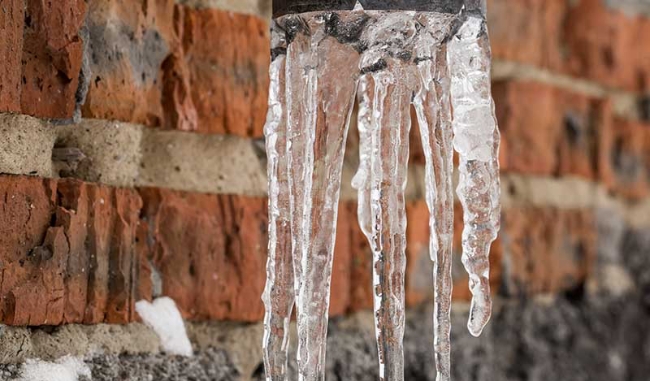The article author is making a few great annotation relating to Helpful Tips to Prevent Frozen Pipes this Winter as a whole in the content following next.

Cold weather can ruin your pipes, particularly by freezing pipes. Right here's exactly how to avoid it from occurring and what to do if it does.
Intro
As temperature levels decrease, the threat of frozen pipes rises, possibly causing pricey repairs and water damages. Understanding just how to avoid icy pipelines is crucial for home owners in cool environments.
Prevention Tips
Insulating at risk pipes
Cover pipes in insulation sleeves or use heat tape to shield them from freezing temperature levels. Concentrate on pipelines in unheated or external areas of the home.
Home heating techniques
Maintain indoor areas sufficiently warmed, particularly areas with plumbing. Open up closet doors to allow cozy air to flow around pipes under sinks.
Exactly how to determine frozen pipes
Seek reduced water circulation from taps, unusual odors or noises from pipelines, and noticeable frost on revealed pipelines.
Long-Term Solutions
Structural modifications
Take into consideration rerouting pipes away from outside walls or unheated locations. Add extra insulation to attics, basements, and crawl spaces.
Upgrading insulation
Invest in top notch insulation for pipelines, attic rooms, and walls. Proper insulation helps preserve regular temperatures and minimizes the threat of frozen pipes.
Protecting Exterior Pipes
Garden pipes and exterior faucets
Disconnect and drain yard tubes before wintertime. Mount frost-proof spigots or cover exterior faucets with protected caps.
Understanding Frozen Pipelines
What creates pipelines to ice up?
Pipelines ice up when revealed to temperatures below 32 ° F (0 ° C) for expanded durations. As water inside the pipes ices up, it expands, putting pressure on the pipeline walls and possibly creating them to burst.
Threats and damages
Frozen pipes can cause water supply interruptions, home damage, and costly repair services. Ruptured pipes can flood homes and trigger extensive architectural damages.
Signs of Frozen Water Lines
Identifying icy pipes early can stop them from bursting.
What to Do If Your Pipes Freeze
Immediate actions to take
If you think icy pipelines, maintain faucets open to relieve stress as the ice melts. Use a hairdryer or towels taken in warm water to thaw pipelines gradually.
Conclusion
Avoiding icy pipes calls for positive procedures and fast actions. By understanding the reasons, indicators, and safety nets, house owners can secure their plumbing during cold weather.
6 Proven Ways to Prevent Frozen Pipes and Protect Your Home
Disconnect and Drain Garden Hoses
Before winter arrives, start by disconnecting your garden hoses and draining any remaining water. Close the shut-off valves that supply outdoor hose bibs and leave the outdoor faucet open to allow any residual water to drain. For extra protection, consider using faucet covers throughout the colder months. It’s also important to drain water from any sprinkler supply lines following the manufacturer’s directions.
Insulate Exposed Pipes
Insulating your pipes is an effective way to prevent freezing. Pipe insulation is readily available at home improvement stores and is relatively inexpensive. Pay close attention to pipes in unheated areas such as the attic, basement, crawl spaces, or garage. Apply foam insulation generously to create a buffer against the cold. You can also wrap your pipes in heat tape or thermostat-controlled heat cables for added warmth.
Seal Air Leaks
Inspect your home for any cracks or openings that could let in cold air. Seal any holes around the piping in interior or exterior walls, as well as the sill plates where your home rests on its foundation. Additionally, make sure to keep your garage door closed unless you’re entering or exiting. Leaving it open creates a significant air leak that can lead to frozen pipes.
Allow Warm Air Circulation
During cold snaps, it’s essential to allow warm air to circulate evenly throughout your home. Leave interior doors ajar to promote better airflow. Open kitchen and bathroom cabinets to help distribute heat consistently around the rooms. If you have small children or pets, be sure to remove any household chemicals or potentially harmful cleaners from open cabinets for safety.
Let Faucets Drip
A small trickle of water can make a big difference in preventing ice formation inside your pipes. When temperatures drop significantly, start a drip of water from all faucets served by exposed pipes. This continuous flow helps prevent the water from freezing. Additionally, running a few faucets slightly can relieve pressure inside the pipes, reducing the chances of a rupture if the water inside does freeze.
https://choateshvac.com/6-proven-ways-to-prevent-frozen-pipes-and-protect-your-home/

We had been made aware of that write-up on How To Avoid Freezing Pipes through an acquaintance on our other site. Liked our entry? Please share it. Let other people find it. Many thanks for being here. Return soon.
Apply Now
 Michael C. Maronna Then & Now!
Michael C. Maronna Then & Now! Hailie Jade Scott Mathers Then & Now!
Hailie Jade Scott Mathers Then & Now! Samantha Fox Then & Now!
Samantha Fox Then & Now! Heather Locklear Then & Now!
Heather Locklear Then & Now! Andrew McCarthy Then & Now!
Andrew McCarthy Then & Now!